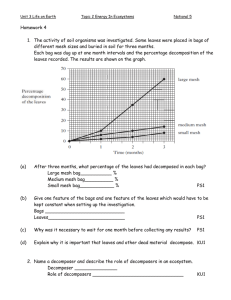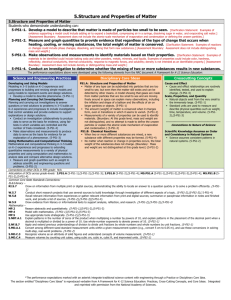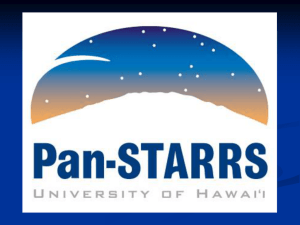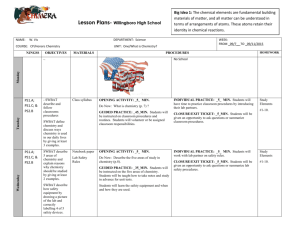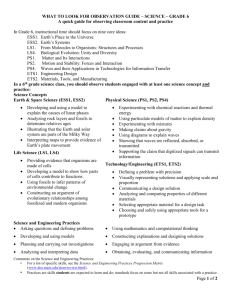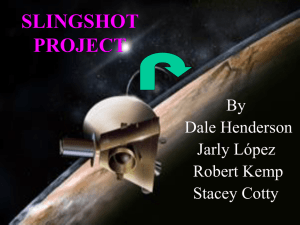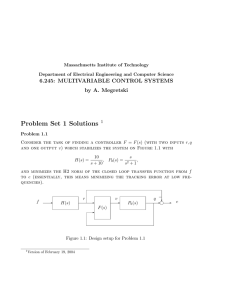Pan-STARRS and PS1 Stephen Smartt Queen’s University Belfast Contents
advertisement
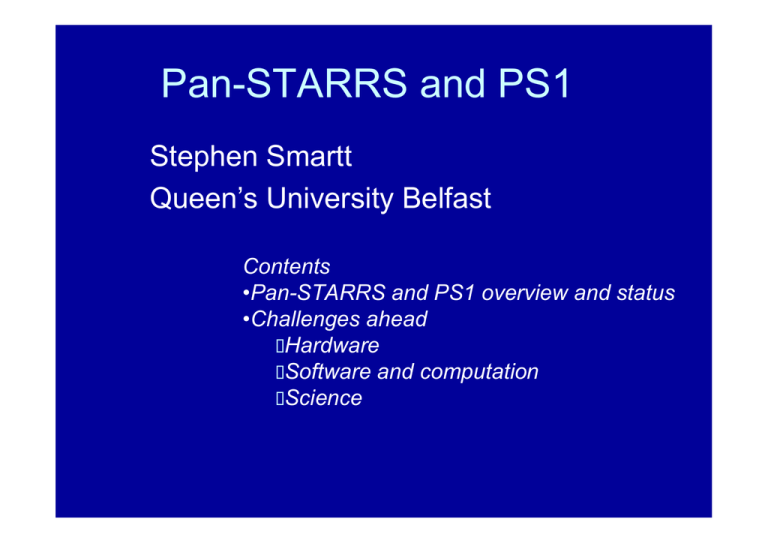
Pan-STARRS and PS1 Stephen Smartt Queen’s University Belfast Contents •Pan-STARRS and PS1 overview and status •Challenges ahead Hardware Software and computation Science The Pan-STARRS project Panoramic Survey Telescope and Rapid Response System PI: Nick Kaiser Camera Lead : John Tonry • • • Univ. of Hawaii project : USAF funded, technology demonstrator – how to survey sky efficiently Construction of prototype PS1 and 1.4Gigapix camera (GPC1) Now moving to PS2 and PS4 construction PS1 • PS1 Director : Ken Chambers • PS1SC is funding a 3.5 yr science mission with PS1 2009-2012 • PS1 data products release to the consortium – full public release 1yr after survey finishes • PS1SC have “long term lease” Haleakala Observatory, Maui Pan-STARRS1 & Pan-STARRS4 Pan-STARRS is run by the University of Hawaii partially funded by the US Air Force PS1: 1x1.8m telescope on Haleakala PS1 surveys started May 2009 PS4: 4 x1.8m telescope on Mauna-Kea Final goal of project PS1 specs • • • • • • • • • 1.8m telescope f/4.4 cass camera GPC1 =1.4 Gigapix 10µm pixels = 0.26” Focal Plane = 8 x 8 CCDs CCD = 8 x 8 cells Cells : 600x600 pix Equiv to 60 4800x4800 CCDs Si area = Sloan x 10 GPC1 Orthogonal Transfer CCDs Normal guiding (0.73”) OT tracking (0.50”) Optical design OTA Quantum Efficiency • OTAs demonstrate expected QE (-65ºC) – 45um thick device is virtually identical to CCID20 – 75um thick device has 50% enhanced QE at 1um (Megacam) SDSS and Pan-STARRS bandpasses Survey Program Summary • 3π Survey (grizy, 56%) – Survey of entire visible sky (from Hawaii) • Medium Deep Survey (grizy, 25%) = MDS – 10 GPC1 footprints distributed over sky – nightly depth set to reach SNIa to z>0.5 • Solar System Sweet Spot Survey (i, 5%) – 2 rectangles ~500 deg. at opposition region +/- 30 deg. • Stellar Transit Survey (r, 4%) = STS – 3 adjacent GPC1 footprint campaign per year • Deep Survey of M31 (grizy, 2%) • Calibration Fields (grizy, 2%) – 20 fields including the MDS and STS fields Estimated Survey Depths MDS 3-pi Filter Exp. 1 Visit 3 yr Exp. 1 Visit 1 yr 3 yr (sec) (mag) (mag) (sec) (mag) (mag) (mag) g 60 23.2 24.6 3x240 24.8 26.7 27.3 r 38 22.7 24.1 3x240 24.4 26.3 26.9 i 60 22.6 23.9 6x240 24.3 26.3 26.9 z 30 21.5 22.9 6x240 23.7 25.6 26.2 y 30 20.1 21.5 6x240 22.3 24.4 24.8 For 5-sigma point source detection limits Computational Challenges • • • • • • • Image Processing Pipeline : IPP Astrometric and photometric calibration Keeping up with the data flow Providing additional capabilities & analysis Shipping data to PS1SC scientists Communication and documentation Long term archiving IPP Lead : Gene Magnier IPP Data products • • • • 3GB per image 1-2TB per night Raw data : 1.8PB over 3.5 yrs Compute cluster 16 nodes x 5 waves (3 waves installed) Data Transfer Speeds (tested from Hawaii, Pittsburgh and Garching) Rsync Threads Value Units 1 0.9 Mbytes/sec 10 7.5 MBytes/sec Total Data transferrable in 1 day 0.65 TBytes Initial SDSS comparisons Key Projects 1) 2) 3) 4) 5) 6) 7) 8) 9) 10) 11) 12) ISS - Populations of objects in the Inner Solar System [Jedicke] OSS - Populations of objects in the Outer Solar System (beyond Jupiter) [Holman] LMS - Low-Mass Stars, Brown Dwarfs, and Young Stellar Objects [Magnier, Brandner] STS - Search for Exo-Planets by dedicated Stellar Transit Surveys [Afonso, Henning] MW - Structure of the Milky Way and Local Group [Bell, Rix] M31 - Dedicated Deep Survey of M31 [Seitz, Bender] MSSP - Massive stars and supernova progenitors [Smartt, Bresolin] CIVET - Cosmology Investigations with Variables & Explosive Transients [Tonry, Riess, Stubbs] GAL - Galaxy Properties [Heckman, Meurer] AGNHZQ - Active Galactic Nuclei and High Redshift Quasars [Chambers, Walter] CL - Cosmological Lensing [Heavens, Kaiser, Taylor] LSS - Large Scale Structure [Cole, Phleps, Bender] The Key Project concept • Experiences from SDSS collaboration led partners to suggest different model • All scientists within the PS1SC institutes have rights to the data • “Key Project” status adopted. • Developed and written (March 08) • Number of leads in proportion to financial share of PS1 mission • Protected (privileged) status Science Analysis Servers • MOPS - Moving Object Processing System [Jedicke] • • • • • • • High Precision Photometry Server [Stubbs] Photometric Classification Server [Saglia] Transient Classification Server [Wood-Vasey, Smartt] Morphological Classification Server [Lucey] Detection Efficiency Server [Metcalfe] Galactic Extinction Server [Finkbeiner] Mock Galaxy Catalogues [Baugh] PS1 + PS2 ~ 2012 Pan-STARRS 4 – Mauna Kea 2015 (+PS1 & PS2 = PS6 ?) LASST = PS16 – 4x PS4 around the world - science on the way - under consideration by US Decadal Review Summary • Main challenges for PS1 now in computation and software • Similar issues to other wide-field surveys (WFC Surveys, SDSS, UKIDSS, VISTA) • Long term archiving open question • Transient Science is new (but CSS, ROTSE, NSF excellent examples) • PS“n” is on the table for the UK • Economic benefits – underplayed ?
